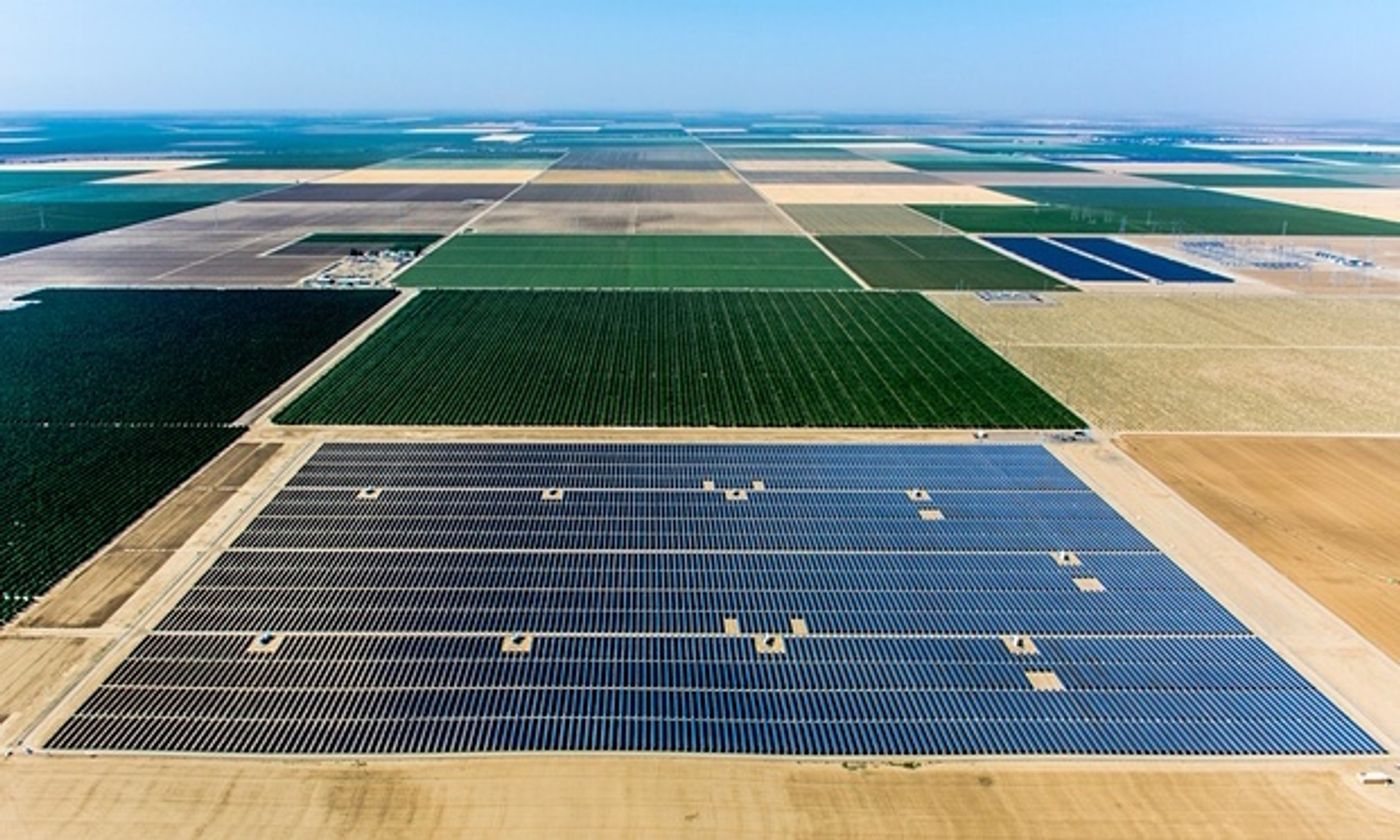California’s drought is well into its fourth year. Last year, Governor Jerry Brown declared a state of emergency over it, and more recently water restrictions have been imposed on everyone in the
Sunshine State. To most residents this has meant not being able to wash their cars and water their lawns, but for California farmers it’s meant they can’t farm nearly as much land as they used to. A few years ago, Nick Rajkovich, one of these farmers, bought 1,200 acres in California's Fresno County, where he grew almonds. When Rajkovich bought the land, it had a steady supply of water, but as the drought has dragged on, the land’s water supply and eventually even federal water deliveries dwindled down to nothing. "Now the almonds are dead," Rajkovich says, and without seeing any relief on the horizon, his assessment is: "The only thing we can farm is the sun. That's why solar is the obvious choice for us."
Like many other farmers in California, Rajkovich is turning some of his land over to solar developers, who are installing solar panels on land where crops used to grow.
It’s better than nothing. Almonds sell for 4 dollars per pound, and according to Rajkovich, each acre could potentially yield a deal about 2,000 pounds a year. "Solar doesn't pay anywhere near that," he says, but it’s an important income source from land that would, as farmland, otherwise be worthless. Referring to the land he’s turned into a solar farm, Rajkovich says, "We don't think we're ever getting water back there.”
Water restrictions have forced California farmers to let over half a million acres lie fallow this year. Planting solar farms have allowed some of these farmers to derive at least some income from land that they simply can’t farm.
In as way, this drought-inspired switch from farmland to solar farms is fortuitous. In and effort to fight the very climate change that is, at least, a major contributor to California’s current drought, the state has passed a new law which will require half of all electricity in California to come from renewable sources by 2030, renewable sources like wind and solar.
All of this renewable energy generation will require land, and as land goes, unusable farmland is a good option. It’s already cleared and graded, and the farmers that own it are looking for some way to use it. This trend, it turns out, has been going on for some time. According to new research, almost a third of California's large solar facilities, ones capable of generating a megawatt or more, are currently on land that was once cropland or pastures.
Lack of water isn’t the only reason farmers have been converting their cropland into solar generating facilities. Irrigation can lead to a build up of salt in the soil. Like lack of water, salt contamination can cause some areas to become unusable as farmland. The Westlands Solar Park, a large generating facility in California sits on 24,000 acres that used to be highly productive farmland. But now, due to salt contamination is it unfarmable. The park’s developers estimate that, if all of the salt-contaminated farmland in America was converted to solar generation, it could potentially generate 5 gigawatts of electricity, one quarter of all the power currently generated by the US.
Source:
National Geographic









